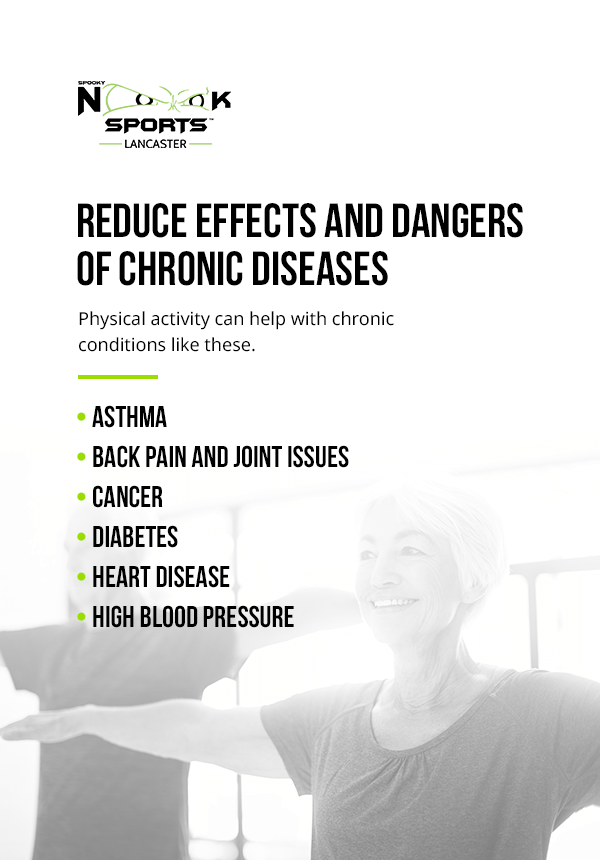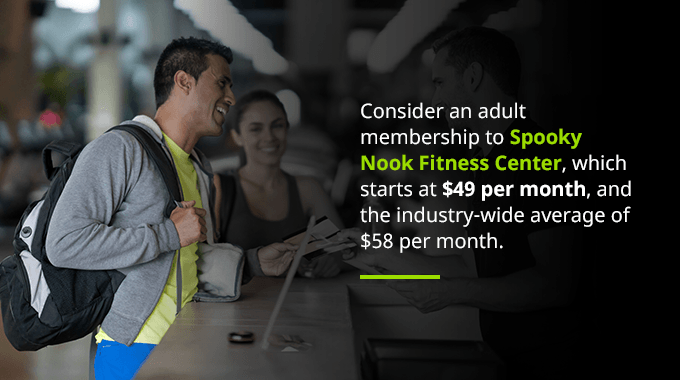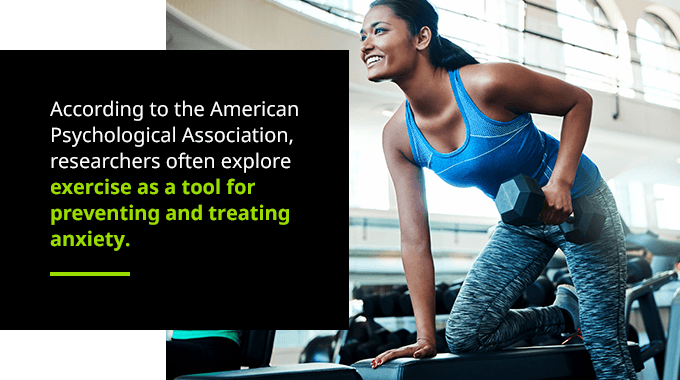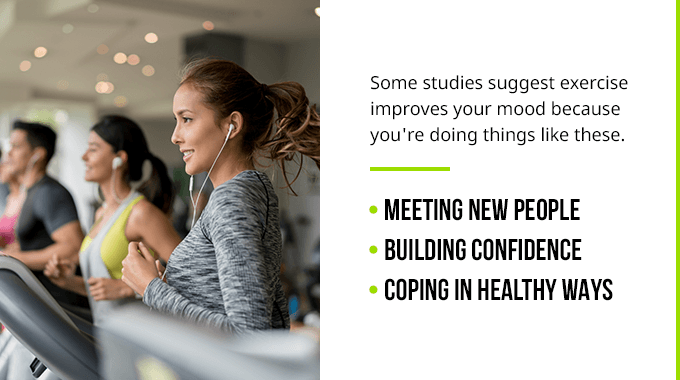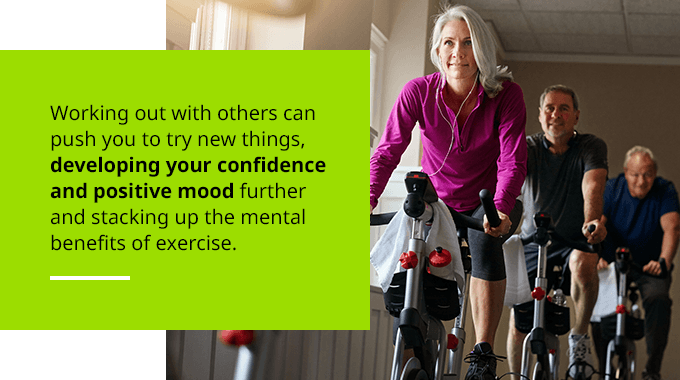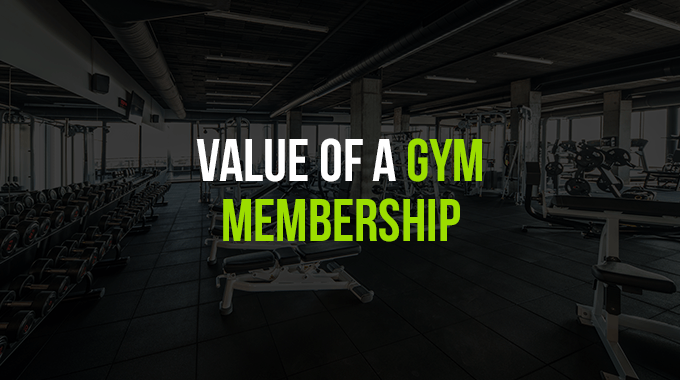
Subscribe to the Blog
Stay up to date
Working out at home is a challenge. There's plenty to distract you from your health goals, and you may not have enough equipment to get a full range of exercises in. That's when you decide it's time to consider joining a gym. Is a gym membership worth it? We think so, but you'll want to compare gym membership price versus value to see if it's right for you.
This guide will go over everything you need to know about the value of a gym membership. Learn how to make your gym membership pay off and all the benefits you'll get from working out at a fitness center that make a membership a valuable investment.
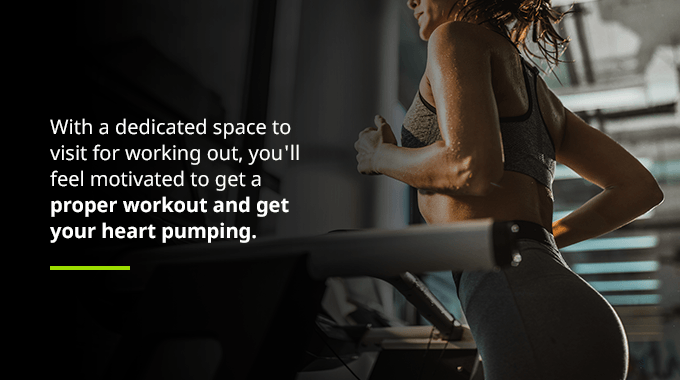
What a Gym Provides
Many people don't have adequate space in their homes for exercising. Even if you have enough room and plenty of exercise equipment, you don't have the full range of options you'd find at the gym. The best gym memberships open up a world of possibilities for your health journey. You can use equipment you've never had access to before and dedicate more time to exercising. With a dedicated space to visit for working out, you'll feel motivated to get a proper workout and get your heart pumping.
But joining a gym gets you more than access to free weights and treadmills. With a gym membership, you can feel your body and mind transform with every visit. We can split these benefits of visiting a gym into tangible and intangible categories.
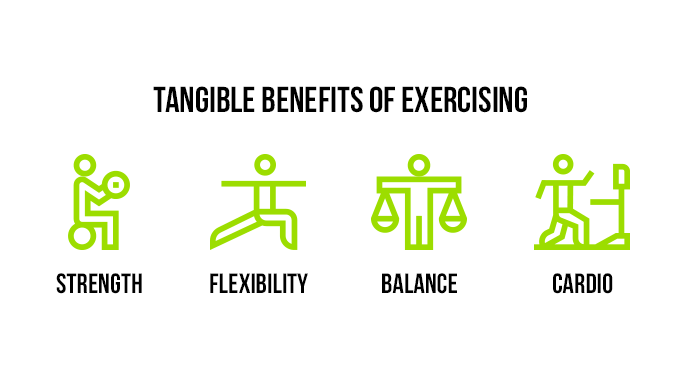
Tangible Benefits of Exercising
When we think about the value of a gym membership, we often focus on the tangible benefits. These are the results we can see and feel after working out. You may lose weight, gain muscle, or feel more energized and healthy after establishing a consistent workout schedule. For many gym-goers, those benefits are the sole reason they work out. But if you want to know how to make your gym membership pay off, you should create various health goals for your fitness center visits.
Tangible benefits of exercise vary with who you are and what you do at the gym. But there are many physical and visible ways to improve your body with fitness center visits. To maximize your gym membership, you should try to create these tangible benefits from your workouts:
- Strength: Strengthen your core, arms, and legs as you exercise for comprehensive workout results. Even light strength training can help develop your muscles, which is especially vital if you otherwise don't use them very often. Experiment with strength training equipment that works different muscles and engages various body parts to make the most of your workout and gym membership.
- Flexibility: With the space a gym provides, you can engage in beneficial stretching before and after your workout. Stretching is essential to keep your body flexible and avoid hurting yourself. Alongside proper workout form, stretches could reduce soreness or injury. You'll also improve your body's function as you increase your range of motion with stretching.
- Balance: Muscle weakness can lead to stumbling or falls, especially as you get older. Exercise can improve your coordination and balance, saving you from falls in the future. As you continue to visit the gym, you may find your balance improves with continuous coordination-improving workouts.
- Cardio: Fitness centers are home to plenty of cardio workout equipment. Whether you jog on the treadmill, row on the rowing machine, or step up to the elliptical, you'll get your heart pumping and your blood flowing. Cardio is essential for heart health, and it helps you burn calories, as well. Try to balance strength training with cardio workouts for a total-body fitness center visit.
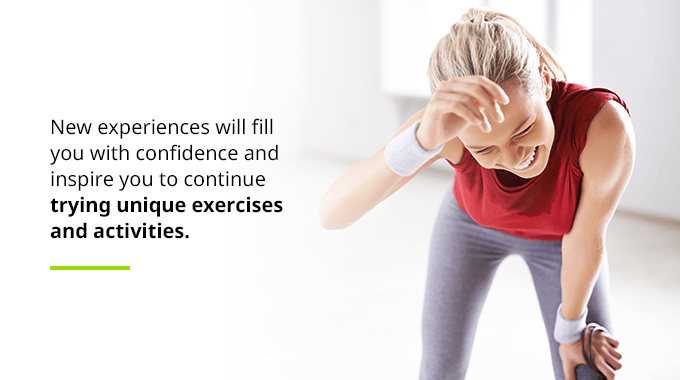
Intangible Benefits of Exercising
A lot of gym-goers focus on the visible, physical results of their workouts. But the intangible benefits also contribute to why gym memberships are worth the cost. These are benefits you may not see directly, or they're long-term advantages that may not be obvious right away. Visit the gym regularly, and you could get these intangible benefits of exercising.
- Live longer: This intangible benefit of exercising comes courtesy of the tangible benefits. When you're active, you improve your health. That can translate to a longer, healthier lifespan. If you don't regularly exercise now, getting at least 150 minutes of activity a week can increase your life expectancy by seven years.
- Gain a sense of accomplishment: When you start going to a fitness center and stick with it, you deserve to feel a sense of pride in your hard work. Regular exercise at the gym gives you a sense of progress and accomplishment as you feel your strength and endurance improving with every visit. That could encourage you to take on new challenges or goals outside the fitness center, as well.
- Meet new people: Going to a gym can become a social activity. You meet like-minded people who are also trying to pursue health goals. They can become new friends who encourage you to continue your visits to the fitness center and keep evolving on your exercising journey.
- Try new things: Unique fitness center equipment and exercise spaces give you access to activities you can't do at home. New experiences will fill you with confidence and inspire you to continue trying unique exercises and activities. You may also discover your favorite way to work out that makes going to the gym even more enticing.
Of course, regular exercise is also a significant benefit for your physical and mental health. These workout benefits are mostly intangible, but they're as valuable as other advantages of going to the gym.
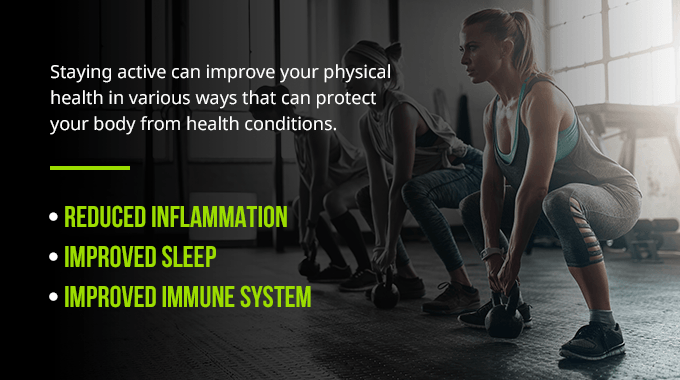
Reduce Risks of Diseases
Not sure how to know if your gym membership is worthwhile? If you make the most of it, you're taking a big step toward reducing your risk for different diseases. According to the World Health Organization, regular physical activity has proven to manage and even prevent diseases like:
- Diabetes
- Heart disease
- Hypertension
- Several types of cancers
- Stroke
These diseases can be life-altering and, in unfortunate cases, cause death. But another advantage of a gym membership is that you can engage in physical activity and help prevent those illnesses. Staying active can improve your physical health in various ways that can protect your body from health conditions.
- Reduced inflammation: Regular exercise acts as an anti-inflammatory, lessening the effect of muscle and tissue swelling associated with aging. Reducing long-term, chronic irritation can lower the risk of issues like cancer, diabetes, and heart disease. It can also improve symptoms associated with arthritis and other autoimmune disorders.
- Improved sleep: Moderate exercise, as long as it's not within three hours of going to bed, can help you have a better night's sleep. Sleeping better will improve your mood, energy, and focus throughout the day, reducing stress and helping prevent other diseases.
- Improved immune system: Boosting your general health with exercise can improve your immune system, as well. That'll keep you healthy since exercise lessens stress and can reduce your chance of getting specific communicable illnesses.
Reduce Effects and Dangers of Chronic Diseases
Even if you already have a chronic condition, you can still reap the benefits of exercising. Of course, you should consult your doctor before joining a gym. Discuss the best exercise options for you and any workouts you should avoid because of your condition. Many medical professionals recommend exercise for managing incurable issues. Physical activity can help with chronic conditions like these.
- Asthma: You might not expect exercise to alleviate asthma symptoms. But you can consult with your doctor to see if regular exercise can help reduce asthma attacks' severity and frequency. When you work out, you increase your lung capacity. That result, along with reduced inflammation, can ease your asthma.
- Back pain and joint issues: As long as you do low-impact exercises, you can regain strength and flexibility throughout your body. When you strengthen muscles around your spine or joints, you can improve their function and alleviate pain.
- Cancer: Regular exercise can improve your quality of life if you've had cancer in the past. Working out can also reduce your risk of dying from breast, colorectal and prostate cancers.
- Diabetes: If you have diabetes, exercising can help insulin lower your blood sugar more effectively. Physical activity can contribute to weight control and energy boosts, as well. For those with Type 2 diabetes, working out can lower your risk of heart disease.
- Heart disease: Regular physical activity improves your heart health. See if your doctor recommends interval training — high-intensity workouts with rest periods between — which can provide health benefits for those with heart disease.
- High blood pressure: If you currently have high blood pressure, taking steps to be active can help lower your risk of heart disease getting worse. It can also reduce the risk of dying from heart disease.
For many, gym memberships are worth the cost for those potential health benefits alone. But you could even ask for advice and support from fitness center employees who are knowledgeable about exercise. You can get suggestions for low-impact exercises or recommendations for the best equipment to use based on your health goals.
Health Costs
What is your health worth to you? That question will put the cost of a gym membership into perspective, as well as the time you put into going to a fitness center to work out. You can improve your longevity and quality of life, and even have some fun along the way.
Getting a gym membership, sticking with it, and working out regularly can be challenging, but it's worth reducing your risk for preventable health problems. Ultimately, you choose the challenge — do you want to put in the work now through exercise, or experience health issues later in life? That answer alone may mean gym memberships are worth the cost.
With that in mind, you also need to know how much to spend on a gym membership. That'll vary depending on where you live, the gym you choose and what the fitness center offers. Consider an adult membership to Spooky Nook Fitness Center, which starts at $49 per month, and the industry-wide average of $58 per month.
Don't think of what you pay per month as fitness center fees — it's an investment in your health, happiness and future. It's a relatively small payment when you compare it to the everlasting value of a gym membership. And spending money on your long-term health is one of the best things you can do for yourself and your family.
Comparing an annual gym membership cost to how much the average adult spends on coffee — anywhere from $1,400 to $2,000 a year — helps you put things in perspective. A gym membership for a year can cost almost one-quarter of the annual total you pay for your lattes. So cut out the caffeine in favor of more beneficial activity, or scale back to make room in your budget for a gym membership. No matter your decision, you should consider a gym membership for its tangible and intangible benefits.
Mental Health and the Gym
When you look into a gym membership price vs. value, physical health benefits may be the first thing to come to mind. And those improvements to your physical health are essential motivations for going to the gym, but regular physical activity gets you much more than that.
Exercise's psychological effects have an array of benefits that'll strengthen your mind-body connection. That means the value of a gym membership doesn't just include dropping some pounds, becoming more agile, or building muscle. You're also doing some good for what goes on behind the scenes. Consider these mental health benefits of exercise.
Reducing Anxiety
According to the American Psychological Association, researchers often explore exercise as a tool for preventing and treating anxiety. That's because working out can ease the panicked, fight-or-flight reaction we feel in stressful situations.
The prevailing hypothesis is that exercising creates similar physical responses, like sweating and an increased heart rate, to what you feel with a fight-or-flight response. But when you exercise, you control the situation. You feel safe and associate those physical responses with something other than danger. Research suggests exercising acts as exposure therapy to help ease anxiety reactions. Research has also suggested that working out can help fight off panic attacks in people who struggle with high anxiety levels. Mental health and exercising go hand in hand, thus increasing your gym membership's value.
Along with retraining your brain to associate former anxiety reactions with an experience, you control, exercising takes your mind off your troubles. At the gym, you can leave your worries behind. Instead, focus on your workout, and break the cycle of negativity that contributes to anxiety.
Reducing Depression Symptoms
Exercise can also reduce depression symptoms. When you exercise, your brain releases endorphins, one type of happy hormone that makes you feel good. So while powering through a workout may feel like a struggle at the time, your brain will reward you afterward with a flood of endorphins. Getting physically active can ease depression symptoms. Research hasn't found the exact link between working out and lessening depression yet. But some studies suggest exercise improves your mood because you're doing things like these.
- Meeting new people: Going to the gym provides opportunities for social interaction. Even if you don't engage with other gym-goers on your visit, you're still spending time around others, and that in itself can have a mood-boosting effect. Join fitness groups or sports teams at your gym to combine making friends and working out in one visit.
- Building confidence: Meet your workout goals and try new things to develop confidence in yourself. That'll make you feel better about yourself and your abilities, helping combat some depression symptoms.
- Coping in healthy ways: Exercising can give you a healthy outlet for negative feelings, like anger or sadness, often associated with depression. When you exercise, you can replace harmful coping habits with one that comes with physical and mental health benefits.
Socializing
You already know spending time with others can improve your self-confidence and make you happier. But socializing is a benefit in itself because it can keep you coming back to the fitness center. Whether you work out in organized groups or visit with an exercise buddy, being friendly with others will encourage you to continue your workout journey. You then create a positive cycle of going to the gym, hanging out with friends, renewing your enthusiasm to return to the gym and meeting even more new people.
Working out with others is a great way to stay motivated with your physical activity goals. When you reach those goals and help your fitness center buddies meet their goals, you'll feel better about yourself. You'll gain a sense of accomplishment and confidence as you continue going to the gym. Working out with others can push you to try new things, developing your confidence and positive mood further and stacking up the mental benefits of exercise.
Improving Concentration and Memory
As we age, our cognitive abilities, like concentration and memory, tend to decline. But exercising at the gym gives our brains a boost. When we work out, we increase brain chemicals that are essential to hippocampus health. That's the part of the brain that controls memory and learning ability. Those chemicals we produce through exercising prevent degeneration and support the hippocampus, helping our memory and concentration. That's another way exercise and mental health go hand in hand.
Those gym membership benefits can make it easier to focus on work or school, even in day-to-day life. You may find yourself focusing more intently, feeling mentally sharp, and engaging with your creativity more. And because exercise also improves sleep, you're helping your concentration by being well-rested and active.
Get the Most Out of a Gym Membership at Spooky Nook Sports
Now that you've learned all about the benefits of regular exercise, you'll now want to know how to choose the best gym membership. Become a member of Spooky Nook Sports' fitness center, home to over 80,000 square feet of exercise space. Our members have access to a wide range of equipment and workout options, from free weights to pickleball courts, group exercise classes, a 200-meter indoor track, and more. And with our free fitness orientation, you can learn how to maximize your gym membership and your workout.
Spooky Nook Sports, located in Lancaster County, PA, is the nation's largest indoor sports complex. Our climbing center and other recreational facilities make us a hub for families, athletes, fans and fellow workout fanatics. At Spooky Nook Sports, our goal is to create spaces where people can gather and develop, growing and progressing on their health journeys. We'd be happy to welcome you as a gym member and help you with your workout goals.
Contact us today to learn more about becoming a member of Spooky Nook Sports.











